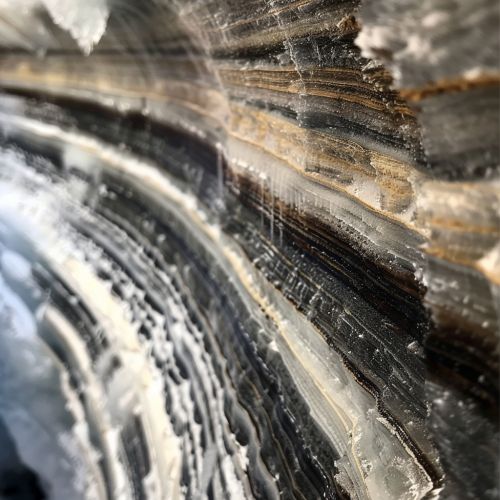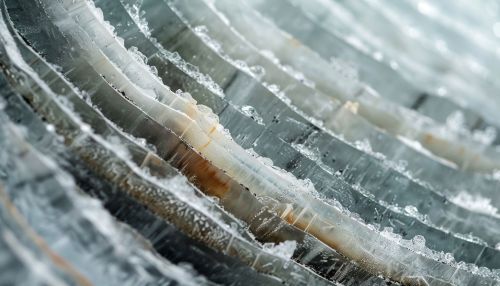Climate Proxy
Introduction
A climate proxy is a type of data derived from natural archives which can be used to estimate climate conditions in the geological past. These proxies are physical, chemical and biological materials preserved within the geologic record that can be analyzed and correlated with climate or environmental parameters in the modern world. Scientists combine proxy-based paleoclimate reconstructions with instrumental data (such as temperature records from weather stations) to understand the variability of the Earth's climate system over a wide range of timescales.
Types of Climate Proxies
Climate proxies can be obtained from sources such as tree rings, ice cores, fossils, coral reefs, and ocean and lake sediments. The type of proxy determines the kind of data it provides, the environment it represents, and the time period over which it is informative.
Tree Rings
Dendrochronology, or tree-ring dating, is a method of scientific dating based on the analysis of tree-ring growth patterns. This can be a powerful tool in paleoclimatology, as the width and density of tree rings can be influenced by climatic conditions. For instance, in temperate regions, tree-ring width is often correlated with the amount of precipitation and temperature.
Ice Cores
Ice cores from glaciers and ice caps provide some of the most detailed and direct measures of past climate. They contain an abundance of information about climate conditions, including temperature, precipitation, chemistry and gas composition of the lower atmosphere, volcanic eruptions, solar variability, and even evidence of wind patterns.
Sediments
Ocean and lake sediments are also important climate proxies. The size, shape, and chemical composition of sediment particles can provide information about past temperature and precipitation. Additionally, the remains of certain species of microscopic organisms in the sediments can provide information about past sea surface temperatures and other oceanic conditions.
Corals
Corals are useful climate proxies because they grow in annual layers and can live for hundreds of years. The chemical composition of these layers can provide information about sea surface temperatures, salinity, and other ocean conditions at the time the layer was formed.
Fossils
Fossils, particularly those of microscopic organisms called foraminifera, can provide valuable information about past climate conditions. The shells of foraminifera contain different isotopes of oxygen, the ratio of which can be used to determine past sea surface temperatures.
Interpretation of Climate Proxies
Interpreting climate proxies involves understanding the relationship between the proxy and the climate or environmental variable of interest. This often involves calibration, or the comparison of proxy data with instrumental data from the same location. Once a relationship is established, the proxy data can be used to reconstruct past climate conditions.


Limitations of Climate Proxies
While climate proxies provide valuable information about past climate conditions, they also have limitations. For example, they often represent local, rather than global, conditions. Additionally, the resolution of proxy records can vary widely, with some proxies providing annual resolution and others only providing resolution on the scale of thousands of years. The accuracy of proxy reconstructions also depends on the reliability of the calibration between the proxy and the climate variable.
Conclusion
Climate proxies are a crucial tool in the study of past climate conditions. They provide a window into the Earth's climate history, helping scientists understand the natural variability of the climate system and the influence of human activities on this system. Despite their limitations, climate proxies continue to provide valuable insights into our planet's climate past, informing predictions about its future.
